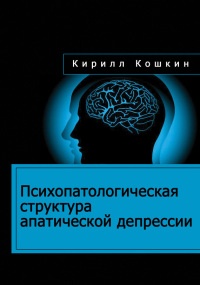class="p1">172. Mendels J. Lithium in the treatment of depression. American Journal of Psychiatry 1976; 133: 373–378.
173. Mendlewicz J., Linkowski P. Guroff J.J., van Praag H.M. Color blindness linkage to bipolar manic-depressive illness. New evidence. Archives of General Psychiatry 1979; 36: 1442–1447.
174. Merikangas K.R., Akiskal H.S., Angst J. et al. Lifetime and 12-month prevalence of bipolar spectrum disorder in the National Comorbidity Survey replication. Archives of General Psychiatry 2007; 64: 543–552.
175. Merskey H. Anna O. had a severe depressive illness. British Journal of Psychiatry 1992; 161: 185–194.
176. Miklowitz D.J., Otto M.E., Frank E. et al. Intensive psychosocial intervention enhances functioning in patients with bipolar depression: results from a 9-month randomized controlled trial. American Journal of Psychiatry 2007; 164: 1340–1347.
177. Miller G.F. Aesthetic fitness: How sexual selection shaped artistic virtuosity as a fitness indicator and aesthetic preferences as mate choice criteria. Bulletin of Psychology and the Arts 2001; 2: 20–25.
178. Moore G.J., Bebchuk J.M., Wilds I.B. et al. Lithium-induced increase in human brain grey matter. Lancet 2000; 356: 1241–1242.
179. Muglia P. Petronis A., Mundo E et al. Dopamine D4 receptor and tyrosine hydroxylase genes in bipolar disorder: evidence for a role of DRD4. Molecular Psychiatry 2002; 7: 860–866.
180. Murray C.J., Lopez A.D. Alternative projections of mortality and disability by cause 1990–2020: Global Burden of Disease Study. Lancet 1997; 349: 1498–1504.
181. Müller-Oerlinghausen B., Müser-Causemann B., Volk J. Suicides and parasuicides in a high-risk patient group on and off lithium long-term medication. Journal of Affective Disorders 1992; 25: 261–269.
182. Nasierowski T. Historia zaburzen nastroju. Psychiatria w Praktyce Ogolnolekarskiej 2007; 7: 75–86.
183. Nesse R.M. Is depression an adaptation? Archives of General Psychiatry 2000; 57: 14–20.
184. Nesse R.M. The smoke detector principle. Natural selection and the regulation of defensive responses. Annales of the New York Academy of Sciences 2001; 935: 75–85.
185. Nesse R.M, Williams G.C. Evolution and Healing: The New Science of Darwinian Medicine. Phoenix, London, 1996.
186. Nestler E.J, Carlezon W.A. Jr. The mesolimbic dopamine reward circuit in depression. Biological Psychiatry 2006; 59: 1151–1159.
187. Nettle D. The evolution of personality variation in humans and other animals. American Psychologist 2006; 61: 622–631.
188. Nettle D., Clegg H. Schizotypy, creativity and mating success in humans. Proceedings: Biological Sciences 2006; 273: 611–615.
189. Neves-Pereira M., Mundo E., Muglia P. et al. The brain-derived neurotrophic factor gene confers susceptibility to bipolar disorder: evidence from a family-based association study. American Journal of Human Genetics 2002; 71: 651–655.
190. Norden M.J. Beyond Prozac. Harper Collins, New York, 1995.
191. Okuma T, Kishimoto A, Inoue K. Anti-manic and prophylactic effects of carbamazepine (Tegretol) on manic depressive psychosis. A preliminary report. Folia Psychiatrica et Neurologica Japanica 1973; 27: 283–297.
192. Ortiz-Dominguez A, Hernandez ME, Berlanga C et al. Immune variations in bipolar disorder: phasic differences. Bipolar Disorders 2007; 9: 596–602.
193. Osby U., Brandt L., Correia N. et al. Excess mortality in bipolar and unipolar disorder in Sweden. Archives of General Psychiatry 2001; 58: 844–850.
194. Panksepp J. Neuroscience. Feeling the pain of social loss. Science 2003; 302: 237–239.
195. Papez J.W. A proposed mechanism of emotion. Archives of Neurology and Psychiatry 1937; 38: 723–743.
196. Papolos D.F., Faedda G.L., Veit S. et al. Bipolar spectrum disorders in patients diagnosed with velo-cardio-facial syndrome: does a hemizygous deletion of chromosome 22q11 result in bipolar affective disorder? American Journal of Psychiatry 1996; 153: 1541–1547.
197. Passmore MJ, Garnham J, Duffy A et al. Phenotypic spectra of bipolar disorder in responders to lithium versus lamotrigine. Bipolar Disorders 2003; 5: 110–114.
198. Patil S.T., Zhang L., Martenyi F. et al. Activation of mGlu2/3 receptors as a new approach to treat schizophrenia: a randomized Phase 2 clinical trial. Nature Medicine 2007; 13: 11021107.
199. Pawlikowska-Jasnorzewska M. Poezje wybrane. Ludowa Spoidzielnia Wydawnicza, Warszawa, 1968.
200. Perlis R.H., Welge J.A., Vornik L.A. et al. Atypical antipsychotics in the treatment of mania: a meta-analysis of randomized, placebo-controlled trials. Journal of Clinical Psychiatry 2006; 67: 509–516.
201. Perris C. A study of bipolar (manic-depressive) and unipolar recurrent depressive psychoses. I. Genetic investigation. Acta Psychiatrica Scandinavica 1966; 194: 15–44.
202. Pezawas L., Meyer-Lindenberg A., Drabant E.M. et al. 5-HTTLPR polymorphism impacts human cingulate-amygdala interactions: a genetic susceptibility mechanism for depression. Nature Neuroscience 2005; 8: 828-34.
203. Pezawas L., Verchinski B.A., Mattay V.S. et al. The brain-derived neurotrophic factor val66met polymorphism and variation in human cortical morphology. Journal of Neuroscience 2004; 24: 10099-10102.
204. Post F. Creativity and psychopathology. A study of 291 world-famous men. British Journal of Psychiatry 1994; 165: 22–34.
205. Post F. Verbal creativity, depression and alcoholism. An investigation of one hundred American and British writers. British Journal of Psychiatry 1996; 168: 545–555.
206. Post R.M., Leverich G.S., Nolen W.A. et al. A re-evaluation of the role of antidepressants in the treatment of bipolar depression: data from the Stanley Foundation Bipolar Network. Bipolar Disorders 2003; 5: 396–406.
207. Post R.M., Rubinow DR, Uhde T.W. et al. Dysphoric mania. Clinical and biological correlates. Archives of General Psychiatry 1989; 46: 353–358.
208. Puzynski S., Kalinowski A., Koszewska I. et al. Zasady leczenia nawracajgcych zaburzen afektywnych. Farmakoterapia w Psychiatrii i Neurologii 2004; 20: 5-46.
209. Puzynski S., KlosiewiczL. Valproic acid amide in the treatment of affective and schizoaffec-tive disorders. Journal of Affective Disorders 1984; 6: 115–121.
210. Rapaport M.H., Gharabawi G.M., Canuso C.M. et al. Effects of risperidone augmentation in patients with treatment-resistant depression: Results of open-label treatment followed by double-blind continuation. Neuropsychopharmacology 2006; 31: 2505–2513.
211. Reuter M., Roth S., Holve K., Hennig J. Identification of first candidate genes for creativity: a pilot study. Brain Research 2006; 1069: 190–197.
212. Rihmer Z., Pestality P. Bipolar II disorder and suicidal behavior. Psychiatric Clinic of North America 1999; 22: 667–673.
213. Robertson G.M. Does mania include two distinct varieties of insanity and should be subdivided? Journal of Mental Science 1890; 36: 338–347.
214. Rosenthal N.E., Sack D., Gillin J.C. et al. Seasonal affective disorder. A description of the syndrome and preliminary findings with light therapy. Archives of General Psychiatry 1984; 41: 72–80.
215. Roybal K., Theobold D., Graham A. et al. Mania-like behavior induced by disruption of CLOCK. Proceedings of the National Academy of Sciences of the USA 2007; 104: 6406–6411.
216. Rybakowski J. Aripirazol – lek przeciwpsychotyczny trzeciej generacji. Ordynator Lekow 2006; 6: 17–20.
217. Rybakowski J. Dziatanie neuroprotekcyjne lekow przeciwdepresyjnych i normotymicznych. Neuropsychiatria i Neuropsychologia 2006; 1: 49–55.
218. Rybakowski J.K. New-Deli: a twelve-week, open, randomized trial comparing sodium val-proate
























